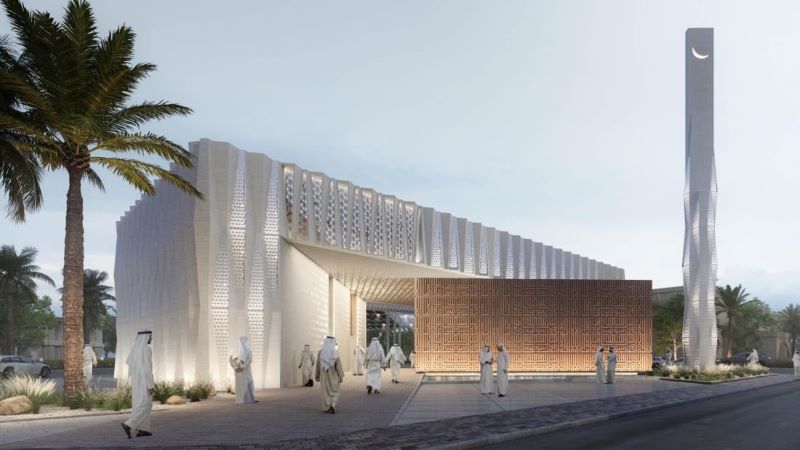In 2018, just as 3D printing was starting to take off as a construction method, Dubai set an ambitious goal: the city wanted to become the 3D printing capital of the world, aiming for a quarter of its new buildings to be printed rather than conventionally constructed.
Follow-through was swift, with the Dubai municipality building becoming the world’s largest 3D printed structure in 2019. The city is continuing to make good on its goal—and breaking its own record—with an even bigger building, and the first of its kind: the world’s first 3D printed mosque will be built there this year. At 2,000 square meters (21,528 square feet), it will accommodate 600 people and have more than twice the square footage of the municipal building.
The mosque is a collaboration between the Islamic Affairs and Charitable Activities Department (IACAD) and architectural firm JT+Partners. There will also be a construction company involved, but a name hasn’t yet been released (the municipality building was constructed by Boston-based Apis Cor; the city could be looking to work with them again, or could take a different direction entirely).
Renderings of the mosque show a design far more intricate than what we’re used to seeing in 3D printed buildings. Most houses and other structures made with the technology have solid, flat walls (save for ICON’s House Zero, whose softer, more creative design includes curved walls both inside and out).
3D printed walls are squirted out of a printer nozzle one layer after another, the concrete rapidly drying and gaining strength. Homes (and military barracks, and apartment buildings) built this way are durable and structurally sound, but not much experimentation has been done with complex or decorative designs.
The Dubai mosque mock-ups tell a different story. They show tall, angled pillars connected by lattice-like panels that let daylight through. The main building’s soaring ceiling extends over a second, smaller building, with an open space between the two creating a wide, airy corridor.

Theo Salet is a long-time advocate of 3D printed construction, and dean of the Department of the Built Environment at Eindhoven University of Technology in the Netherlands. While he’s supportive of the Dubai mosque project, he acknowledges that some aspects of its construction will be uncharted territory and likely won’t be easy. “Realizing a large and eye-catching project like this is quite a task, of a scale yet unknown,” he told CNN. “Without any doubt the 3D printing will work, however…a project of this scale and ambition is, in my opinion, a project to learn from and mistakes should be possible.”
After years of churning out stand-alone buildings and small communities of homes, it seems 3D printing could reach a new level of scalability, with developments of 50 to 100 homes underway in Texas and Kenya. But plenty of challenges remain; critics point out that the cost savings of 3D printed construction may not end up being as worthwhile as all the hype implies, nor will the eco-friendliness, since the technology uses cement, a major source of carbon emissions.
At a time when we desperately need better ways to build things, though, it seems like these issues are worth trying to work through. After all, if we can print bases on the moon using lunar soil, shouldn’t we be able to build affordable, high-quality houses and buildings on Earth? In any case, projects like the Dubai mosque will continue to push the edges of 3D printing construction capability, both in terms of scale and complexity.
Image Credit: JT+Partners and IACAD
* This article was originally published at Singularity Hub

0 Comments